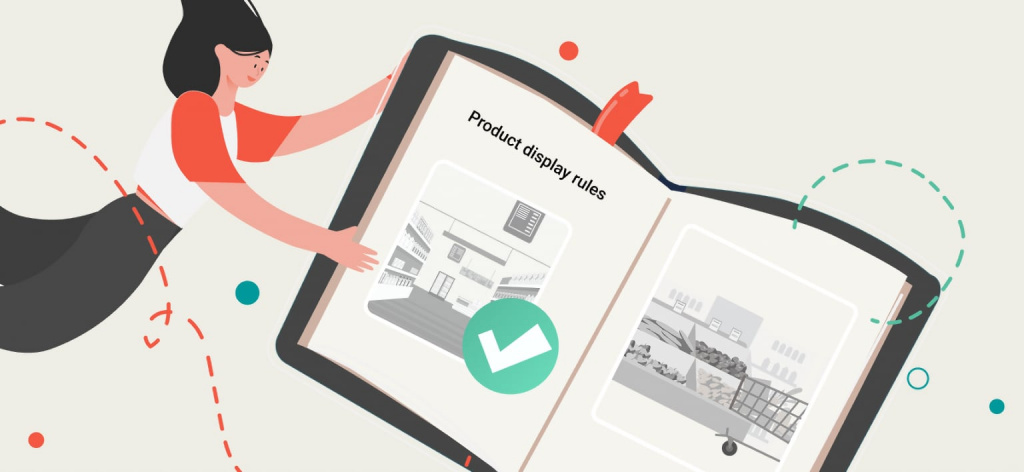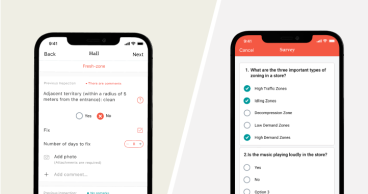Qvalon Blog article content
What is merchandising?
Often merchandising is reduced solely to the layout or goods’ presentation, but it would be a significant omission. This is a much broader and more multifaceted business process.
In short, merchandising is a sales tool. Let’s explain it by example.

Consider two companies, one of which has a clear merchandising concept, and the second which does not.
comparison table
| Merchandising concept available | No merchandising concept |
|---|---|
| Sales are close to planned or planned. | Sales are unpredictable. |
| The current season’s goods are completely sold to free up space for the next season’s goods. | The current season’s goods are not sold in full. There is an illiquid balance, which occupies the area necessary to deliver the next season’s goods. |
| Leftovers from previous collections are minimized or zero. | There are not enough funds to purchase a new batch of goods. |
| Enough free funds for the purchase of a new batch of goods. | It is necessary to make additional efforts to work with the leftovers (sale at cost, conservation, disposal). |
Table. Comparison of companies with and without the concept of merchandising
According to our experience, the working concept of merchandising gives an increase in the profit of the retail chain of up to 50%.
How to develop a merchandising concept
- You need to start by setting yourself a benchmark: What brand do you want to be like? Of course, not a complete copy, but the reference concept.
- Determine your target audience and price segment.
- Monitor competitors, evaluate their weaknesses and strengths.
- Decide on the external design, internal ergonomics of the store, lighting of commercial equipment, etc.
- Explore current fashion trends.
- Create a collection.
- Plan and calculate the assortment, using store occupancy calculations (units per sq. m.). Please note that you need to calculate the number of products per square meter of area, taking into account the market segment you intend to work with. There will be appropriate values for the mass market and, obviously, others for the luxury market.
- Develop the concept of product presentation — a merchandising book. It should be as close as possible to consumer trends in product consumption.
- Train the staff in the new concept. The most effective way to do this directly in the store is to do it by assembling a new complex look. Then it is necessary to organize regular monitoring of compliance with the developed concept.
- Think about how often, what methods, and what reports you will use to analyze the sales success of a product group or a specific SKU.
How to develop a merchandising book
When developing a merchandising book, the most important thing is to remember that it is created for the store staff to be engaged in the layout and presentation of the product. Most often, these employees do not possess the amount of knowledge that you do. Therefore, all recommendations for the presentation of the product should be accompanied by illustrations, photo examples, and clear descriptions.

Main sections of the merchandising book:
- A thesis description of the company’s product strategy: who our customer is for whom this product is created. We provide simplified illustrations of a potential buyer, describe his portrait.
- Description of the store areas.
- Description of the types of commercial equipment used for product presentation.
- Description of the rules for the presentation of various product groups.
- Description of the rules for placing the quantity and type of product layout on various types of commercial equipment.
- Description of the rules for creating ready-made looks.
How to increase sales with the help of merchandising?
Fortunately, almost all the techniques have long been known, and there is no need to reinvent the wheel. Your task is to pump this “wheel” and customize it for yourself, so the concept of your brand is unique.
Here are the basic principles, according to our experience, that contribute to increasing sales.
- Give the consumer the product they want at the time they need it (seasonal trends).
- Analyze the actions of your competitors to form a more favorable price offer (a well-thought-out promotional policy, a loyalty program).
- Zoning the store and placing the sales equipment, so that the buyer is comfortable approaching and finding the product.
- Make the promotional product as clear as possible for the buyer.


